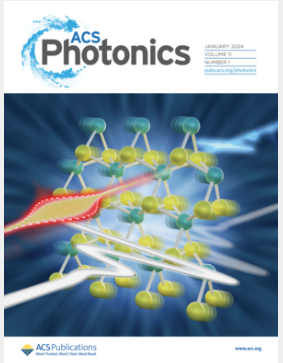两种准II型异质结构量子点增强电致发光的比较研究
IF 6.7
1区 物理与天体物理
Q1 MATERIALS SCIENCE, MULTIDISCIPLINARY
引用次数: 0
摘要
提高量子点发光二极管(qd - led)的性能通常涉及使用宽带隙壳层来限制载流子,这已被证明是一种有效的策略。然而,在核心内注入电荷对器件效率至关重要,控制异质结构可以更深入地了解电荷动力学。在这项研究中,我们独立地操纵电子和空穴注入,同时通过使用相同的核心但生长不同的壳层来保持一致的发射特性。合成了两种准II型量子点:空穴注入的受体量子点(A-QD)和电子注入的给体量子点(D-QD)。通过改变这些量子点的沉积顺序,我们观察到电荷注入效率的显著差异,这强烈影响了器件的性能。值得注意的是,空穴传输层附近的a - qds和电子传输层附近的D-QDs (AD-QD-LED)的组合导致最大亮度为81,400 cd/m2,效率为9.1 cd/ a,与DA-QD-LED相比,亮度提高了近30倍,效率提高了15倍。我们的发现首次清晰地展示了准II型量子点与定制核壳结构的结合如何控制量子点led中的电荷注入动力学,为优化电荷平衡和提高器件效率提供了新的途径。本文章由计算机程序翻译,如有差异,请以英文原文为准。

Comparative Study of Two Different Quasi-Type II Heterostructured Quantum Dots for Enhanced Electroluminescence
Enhancing the performance of quantum dot light-emitting diodes (QD-LEDs) often involves using wide band gap shells to confine charge carriers, which has proven to be an effective strategy. However, injecting charges within the core is critical to device efficiency, and controlling heterostructures can provide deeper insights into charge dynamics. In this study, we independently manipulated electron and hole injection while maintaining consistent emission properties by using the same core but growing distinct shells. Two types of quasi-type II QDs were synthesized: acceptor QDs (A-QD) for hole injection and donor QDs (D-QD) for electron injection. By varying the deposition order of these QDs, we observed significant differences in charge injection efficiencies that strongly influenced device performance. Notably, the combination of A-QDs near the hole transport layer and D-QDs near the electron transport layer (AD-QD-LED) resulted in a maximum brightness of 81,400 cd/m2 and an efficiency of 9.1 cd/A, representing nearly 30 times higher luminance and 15 times greater efficiency compared to the DA-QD-LED. Our findings provide the first clear demonstration of how the combination of quasi-type II QDs with tailored core/shell structures can control charge injection dynamics in QD-LEDs, offering a new pathway for optimizing charge balance and enhancing device efficiency.
求助全文
通过发布文献求助,成功后即可免费获取论文全文。
去求助
来源期刊

ACS Photonics
NANOSCIENCE & NANOTECHNOLOGY-MATERIALS SCIENCE, MULTIDISCIPLINARY
CiteScore
11.90
自引率
5.70%
发文量
438
审稿时长
2.3 months
期刊介绍:
Published as soon as accepted and summarized in monthly issues, ACS Photonics will publish Research Articles, Letters, Perspectives, and Reviews, to encompass the full scope of published research in this field.
 求助内容:
求助内容: 应助结果提醒方式:
应助结果提醒方式:


